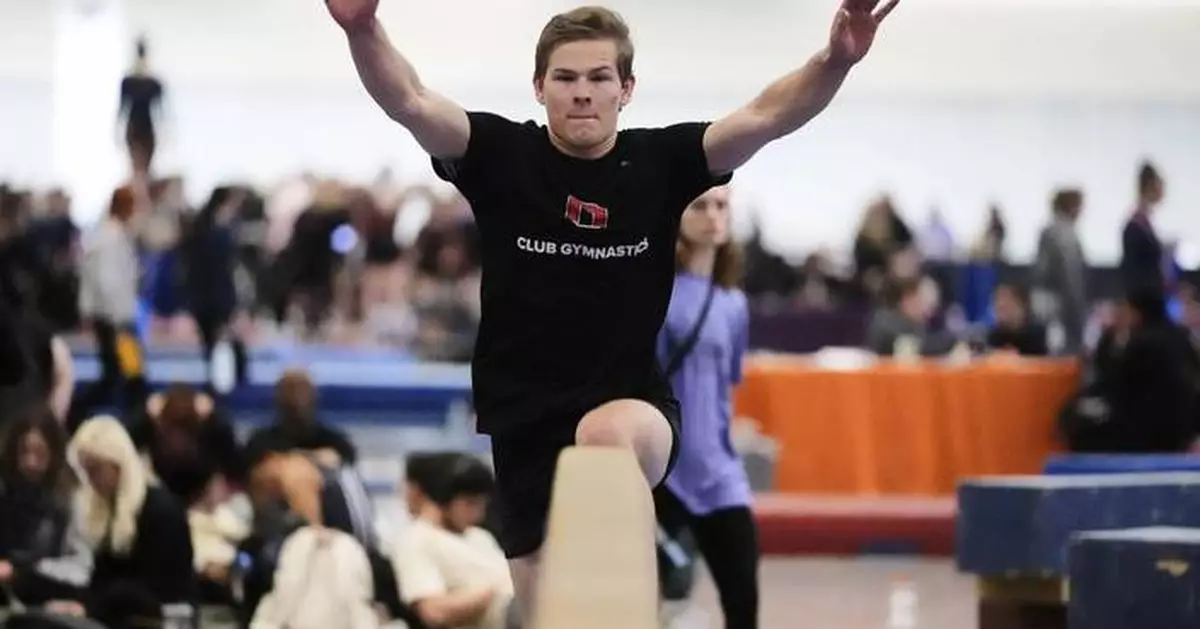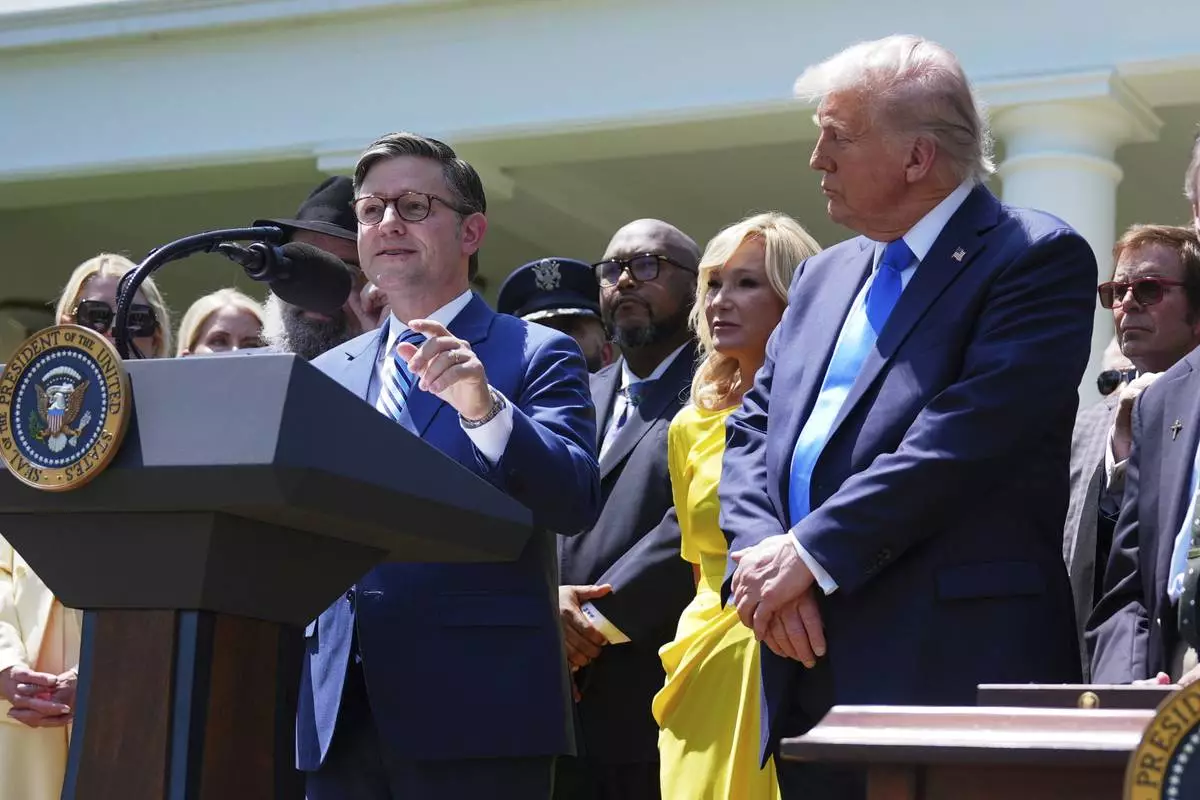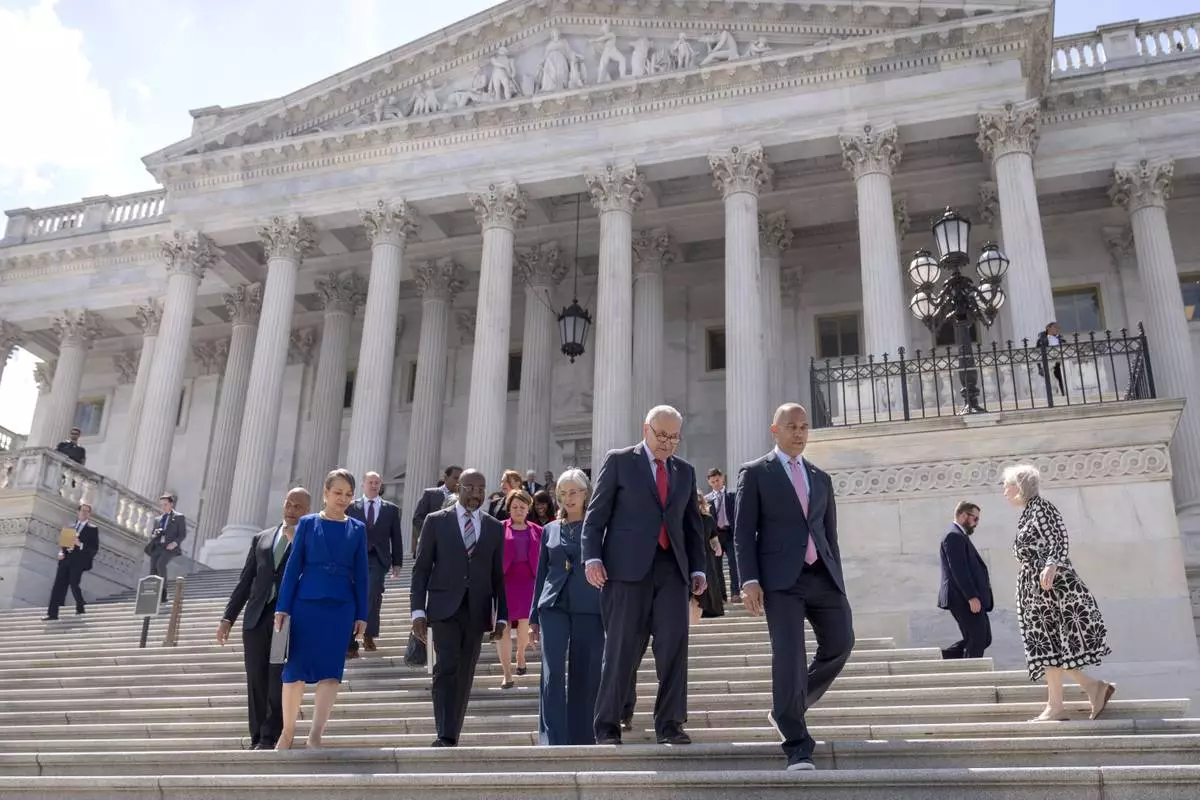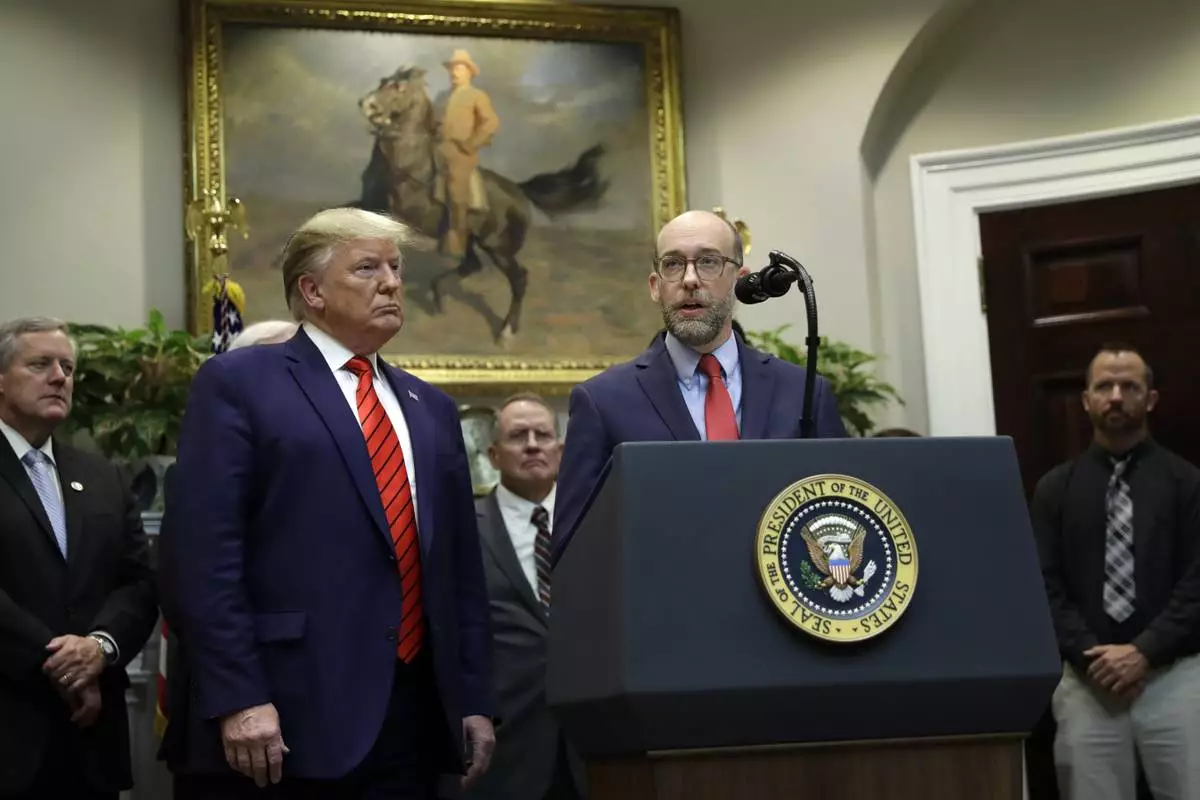PITTSBURGH (AP) — Brody Penn tried every sport as a kid. He started with gymnastics, but his parents worried the gym was too far away. So they signed him up for baseball and soccer, only to have a familiar scene play out over and over.
The games would start, and Penn would inevitably find himself turning cartwheels.
“My family was like, ‘You know what? Maybe you should just be in gymnastics,'" said Penn, now a student at Ohio State. “And so I went back to gymnastics.”
More specifically, Penn went back to men's gymnastics. He competed as a Level 10 in the USA Gymnastics system in high school, one step short of elite.
Penn just didn't find happiness. Not true happiness anyway. Asked what drew him to the sport in the first place, Penn doesn't talk about pommel horse or parallel bars — two of the six men's apparatuses — but floor routines set to music, a staple on the women's side.
“It's about artistry, it's about emotion," he said. “I couldn't stop watching it."
He just couldn't do it. Sure, there were times when Penn would hop on the balance beam during practice, but only when his coach's head was turned. Why?
“It was always sort of like a forbidden thing,” he said.
It's not in the National Intercollegiate Association of Gymnastics Clubs, which has taken the sport's gender norms and practically erased them. The NAIGC gives its athletes the freedom to compete in whatever discipline they want.
For Penn, now a member of the Ohio State University Club Gymnastics Team, that meant the opportunity to lean into the things that made him fall in love with the sport in the first place. He's hardly the only one. The NAIGC offers “Unified Artistic Gymnastics,” which lets athletes compete in any event they like, a la carte style.
Want to do men's floor exercise and uneven bars? Sure. Still rings and balance beam? Go for it.
Nearly a quarter of the over 1,700 competitors who participated in the NAIGC's 2025 national competition in Pittsburgh this month tried at least one UAG event. Nearly 100 gave “the decathlon” — performing all six men's disciplines and all four women's disciplines — a shot.
During the all-around or individual events at nationals, the athletes are eligible for awards based on whichever gender group they registered under (women's-plus or men's-plus), their skill level, and whether they're part of a college or community team.
It's not that way in the decathlon and the omnithon — which are the 10 artistic events plus trampoline and tumbling. In those events, athletes compete against everyone else at their level, regardless of gender identity.
“It's pretty beautiful, really,” said Penn, who took first in the decathlon in the open/advanced group at nationals. “It's a great vibe.”
It's also, in a way, a great equalizer.
Julia Sharpe had two brothers who did men’s gymnastics growing up. She joined the gym on the women's side and had plenty of success. But it was kind of boring. Sharpe started experimenting with men's events during what the MIT club gymnastics team called “switch day" more than a decade ago. She was hooked.
“The men actually have variety,” said Sharpe, who finished third in the decathlon at nationals behind Penn and just ahead of her husband, Nate. “There's all these different things that they get to do. Rings and parallel bars are just completely different. I just thought it would be cool to try those other things."
Now, a full 10 years-plus into competing while also teaching men's and women's gymnastics to beginners, Sharpe has learned that while there are some events in which cisgender men may have a potential advantage because of their body composition — like say, still rings, which requires significant upper-body strength — there are also events in which a man's body might struggle.
Sharpe pointed out that in the lower level of NAIGC men's artistic gymnastics events, the women are “destroying the men” in part because the women typically come to the men's events with an established background in the sport; most novice men are typically completely new to it.
During nationals, for example, the highest score on pommel horse in the development group was an athlete from the women's-plus division.
The vast majority of NAIGC athletes don't compete to win, but to explore and experiment. Some of the loudest cheers during nationals came when an athlete competed on an event that didn't necessarily align with a gender norm.
Morgan Kessler, a student at Texas State University, has bounced around the sport. He reached Level 10 in men's gymnastics before reaching elite in trampoline and tumbling. He's returned to artistic gymnastics as a college student, but on his terms, which is exactly the point the NAIGC is trying to make.
“It's just a really inclusive environment,” Kessler said after an impressive women's floor exercise routine in which he mixed powerful tumbling with dance elements that allowed him to showcase his more creative side. “Whether you're out on the floor competing with the women's floor team or men's, it doesn't really matter at the end of the day. Everyone is going to cheer for you.”
The only thing most athletes who spoke to the AP agree on is that pretty much nobody wants to do the pommel horse, the event that gymnast-turned-“Dancing With The Stars” winner Stephen Nedoroscik drilled to help the U.S. men win a team bronze at the Paris Olympics last summer.
“Pommel horse is the devil,” said Fay Malay, a member of the Jurassic Gymnastics club who competes in women's artistic gymnastics but hopes to give the decathlon a shot one day. “And then whoever invented that, like, hated men and everybody else. But mostly men.”
There is another piece to this. Men's gymnastics has struggled to gain traction in the U.S. for years, and the number of NCAA Division I programs is dwindling. There are obvious reasons — most notably the lack of community gyms that even have men's equipment — but also an underlying one: the way the sport can be perceived.
Penn says he's been through his “fair share” of harassment. Find a social media account showcasing a man doing what is considered a “women's” event and you don't have to scroll down too far before the trolls come out. Asked if it bothers him, Penn shrugged.
“That says more about their character than mine,” he said.
Eric Petersen does not fit the profile of someone who would be open to hopping up on the balance beam. He competed for the Air Force Academy men's team 30 years ago, then took a decadelong break before getting back into the sport.
The married father of two teenagers admits the kid who suited up for the Falcons would never have thought one day he'd be saluting women's floor exercise judges.
Yet there Petersen was, rocking multicolored leggings and a shirt that read “Kenough” while “I'm Just Ken” from the blockbuster movie “Barbie" blared over the speakers and everyone nearby roared with delight as he competed his floor routine for the final time.
Petersen will put together another one with new music and a new theme for next season, when he will be 50. He has no plans on “retiring.” Why would he? Gymnastics has never been more fun in part because it's never been more open.
“All that stuff, the idea that men do this and women do that and never the ‘twain shall meet,' it's all arbitrary," he said. “It's made up. Why are we self-selecting out of it? I'm just a guy right? Why can't I do that? Why can't we do that? Why does it have to be that way? It doesn't.”
AP Sports: https://apnews.com/hub/sports
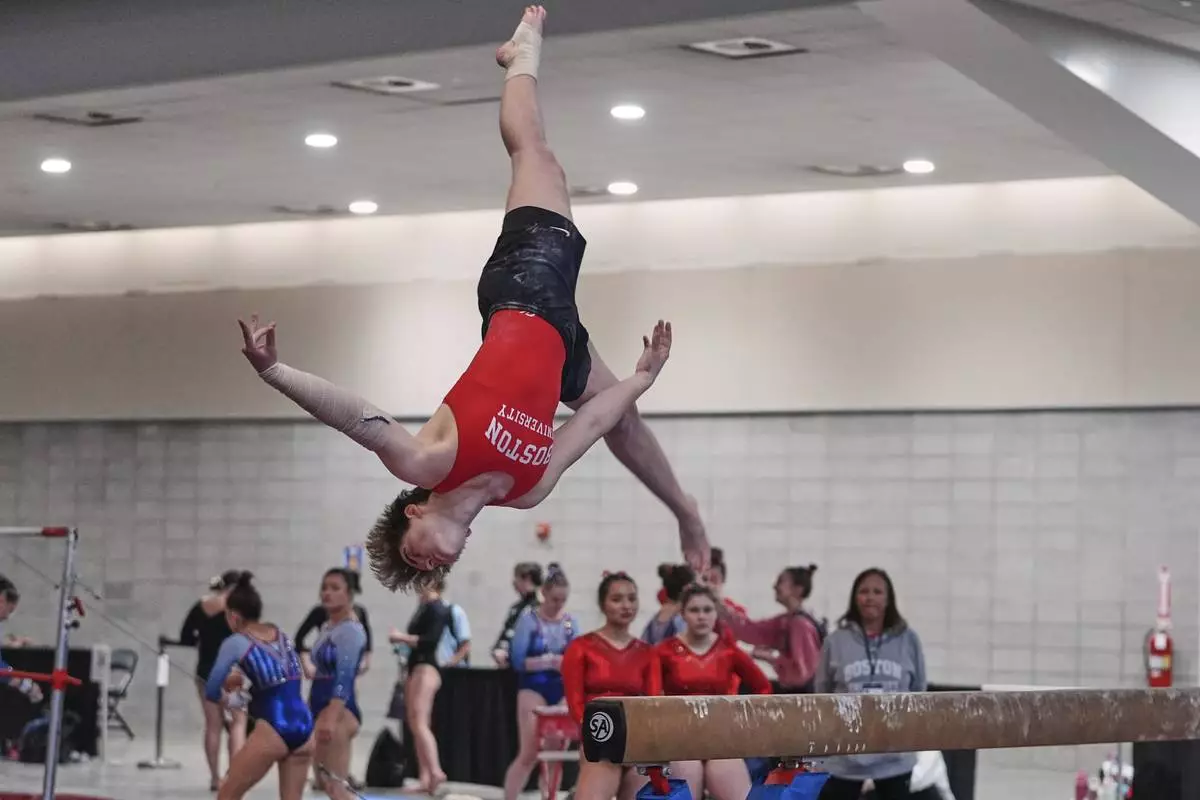
Ten Harder, of Boston University Gymnastics Club in Boston, dismounts the balance beam at the 2025 NAIGC national competition in Pittsburgh, Friday, April 4, 2025. (AP Photo/Gene J. Puskar)
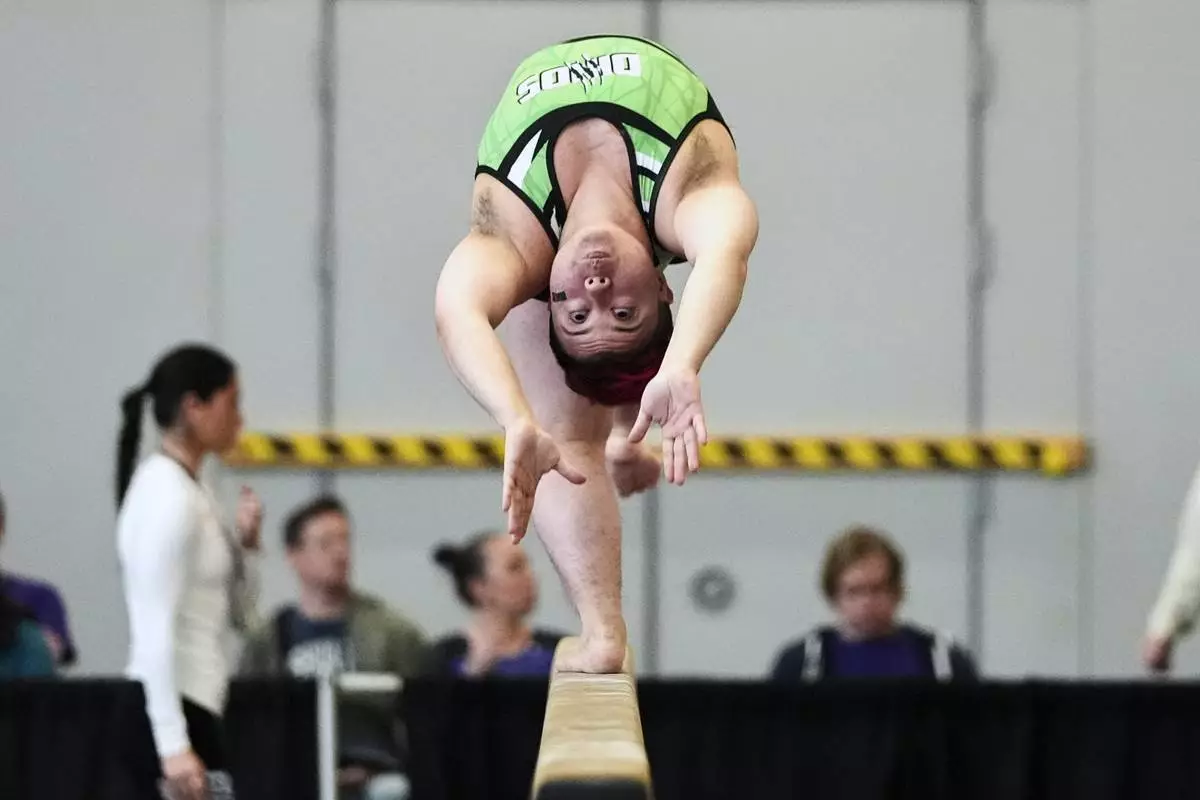
Raiden Hung, of Jurassic Gymnastics in Boston, competes on the balance beam at the 2025 NAIGC national competition in Pittsburgh, Friday, April 4, 2025. (AP Photo/Gene J. Puskar)
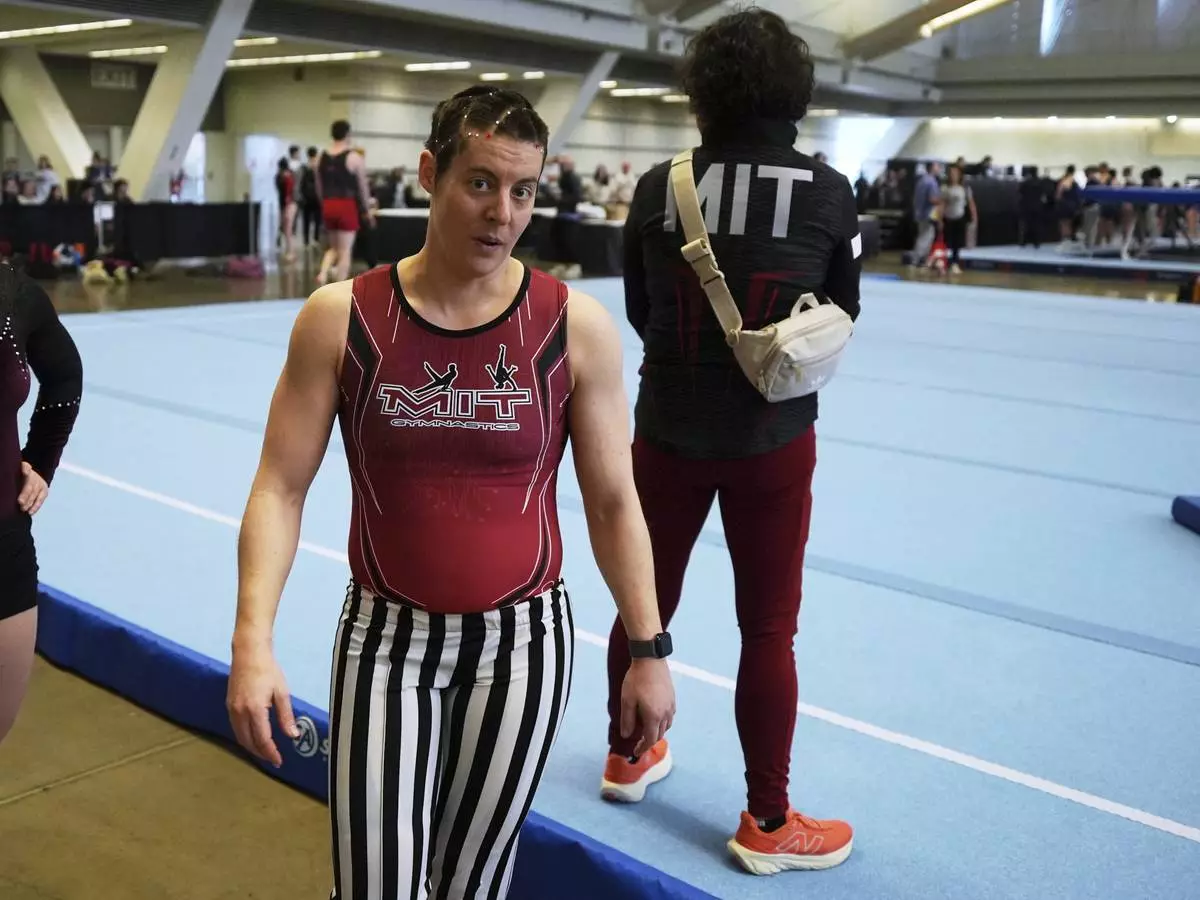
Julia Sharpe, left, of the MIT Gymnastic Club of Boston, finishes her warm up before competing in the floor exercise at the 2025 NAIGC national competition in Pittsburgh, Friday, April 4, 2025. (AP Photo/Gene J. Puskar)
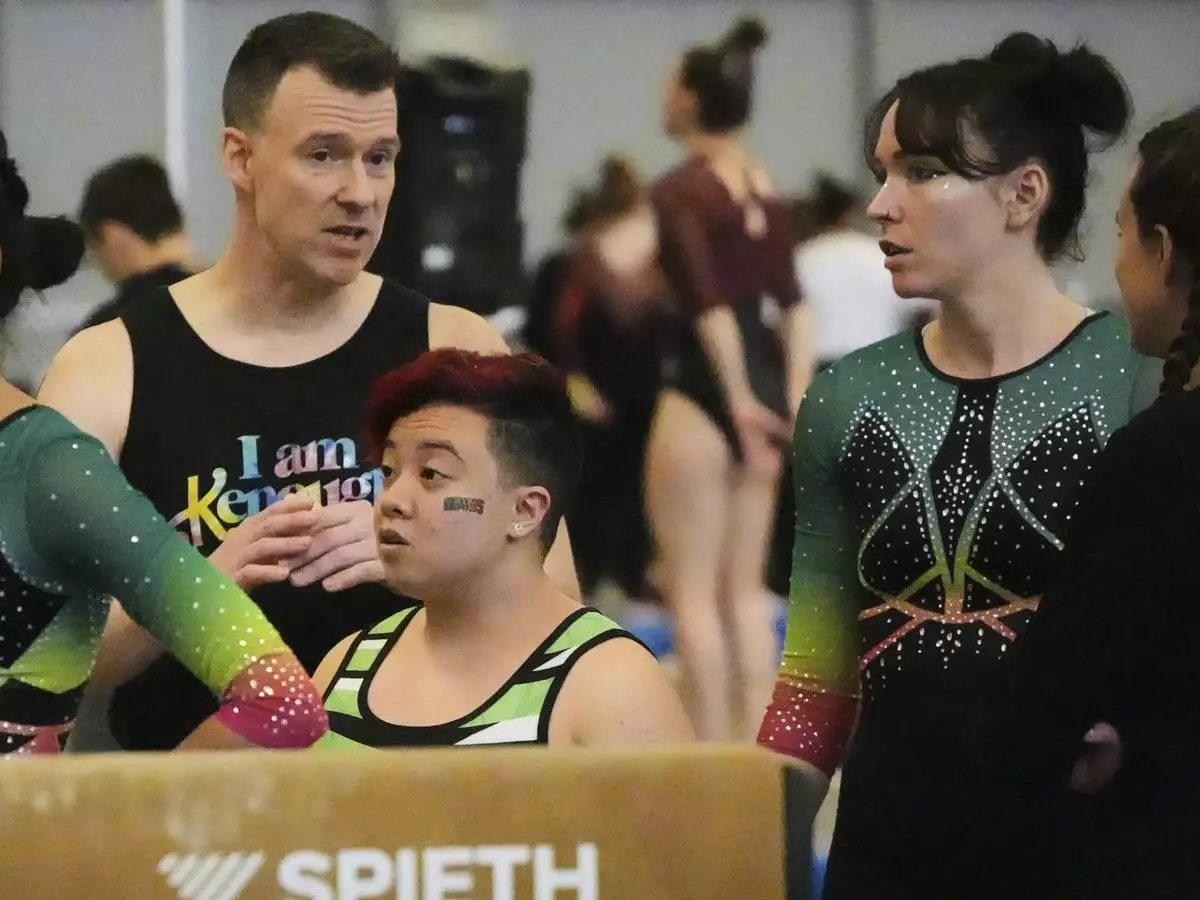
Raiden Hung, center, of Jurassic Gymnastics from Boston, to compete on the balance beam with teammates Eric Petersen, left, and Fay Malay at the 2025 NAIGC national competition in Pittsburgh, Friday, April 4, 2025. (AP Photo/Gene J. Puskar)
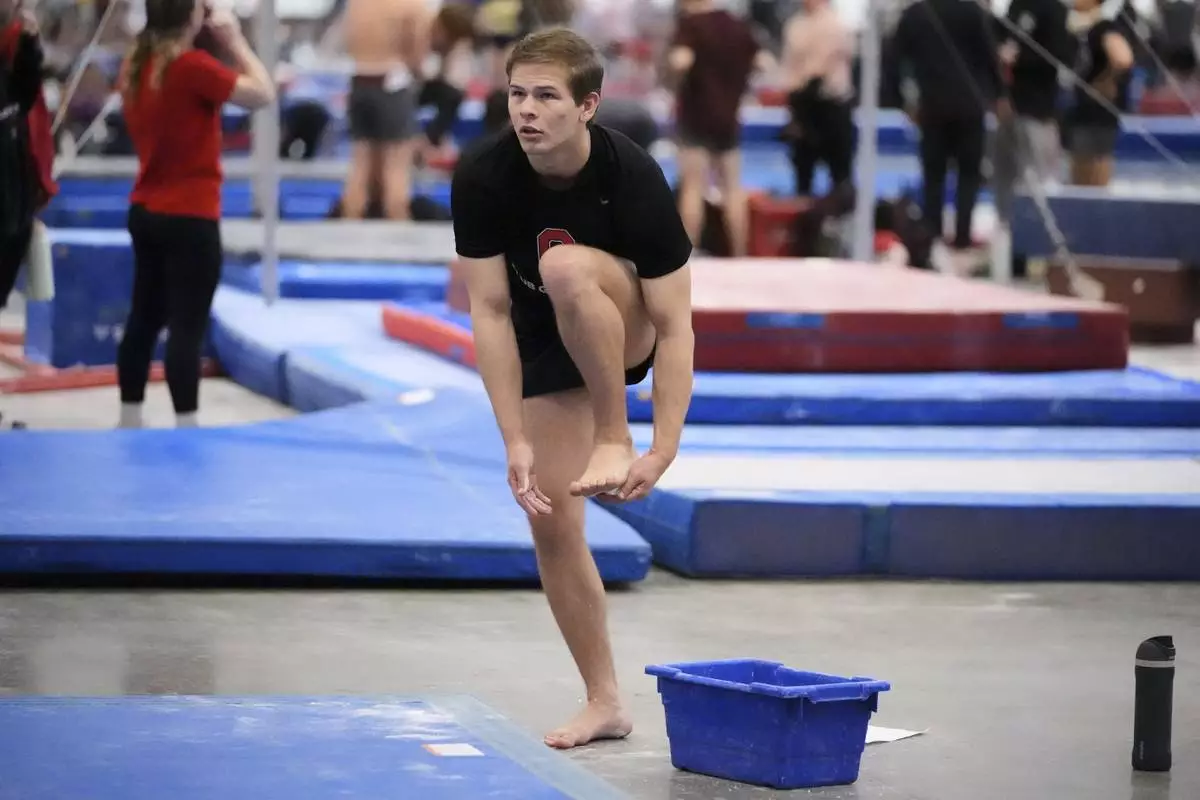
Brody Penn of Ohio State Club Gymnastics team puts chalk on his feet before warming up on the balance beam at the 2025 NAIGC national competition in Pittsburgh, Friday, April 4, 2025. (AP Photo/Gene J. Puskar)
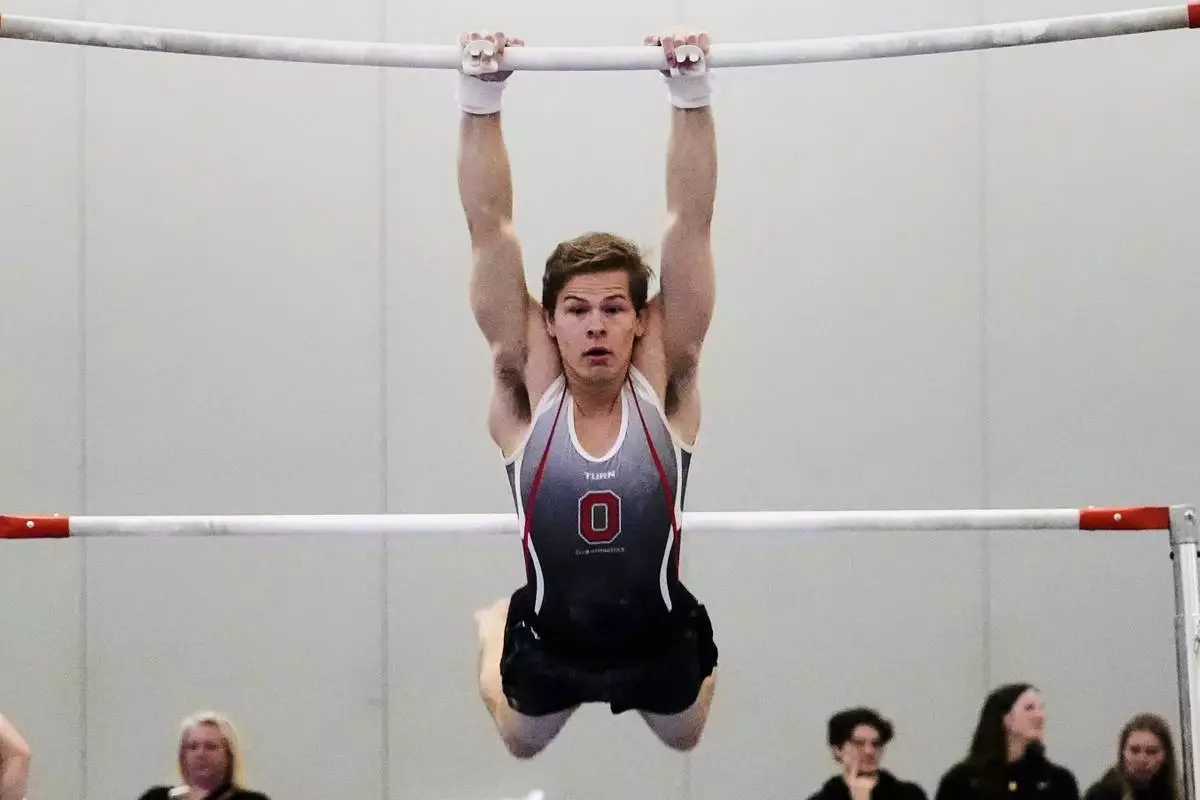
Brody Penn of Ohio State Club Gymnastics team competes on the uneven bars at the 2025 NAIGC national competition in Pittsburgh, Friday, April 4, 2025. (AP Photo/Gene J. Puskar)
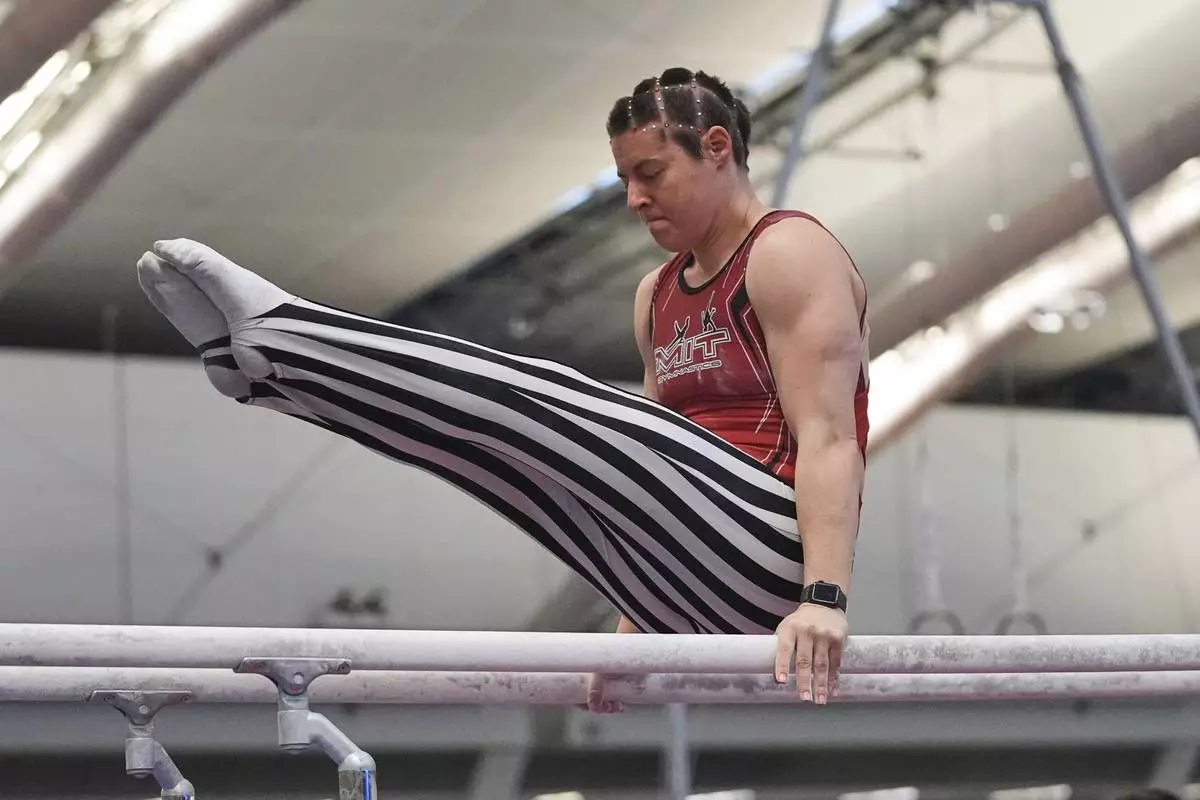
Julia Sharpe, of the MIT Gymnastic Club of Boston, competes on the parallel bars at the 2025 NAIGC national competition in Pittsburgh, Friday, April 4, 2025. (AP Photo/Gene J. Puskar)
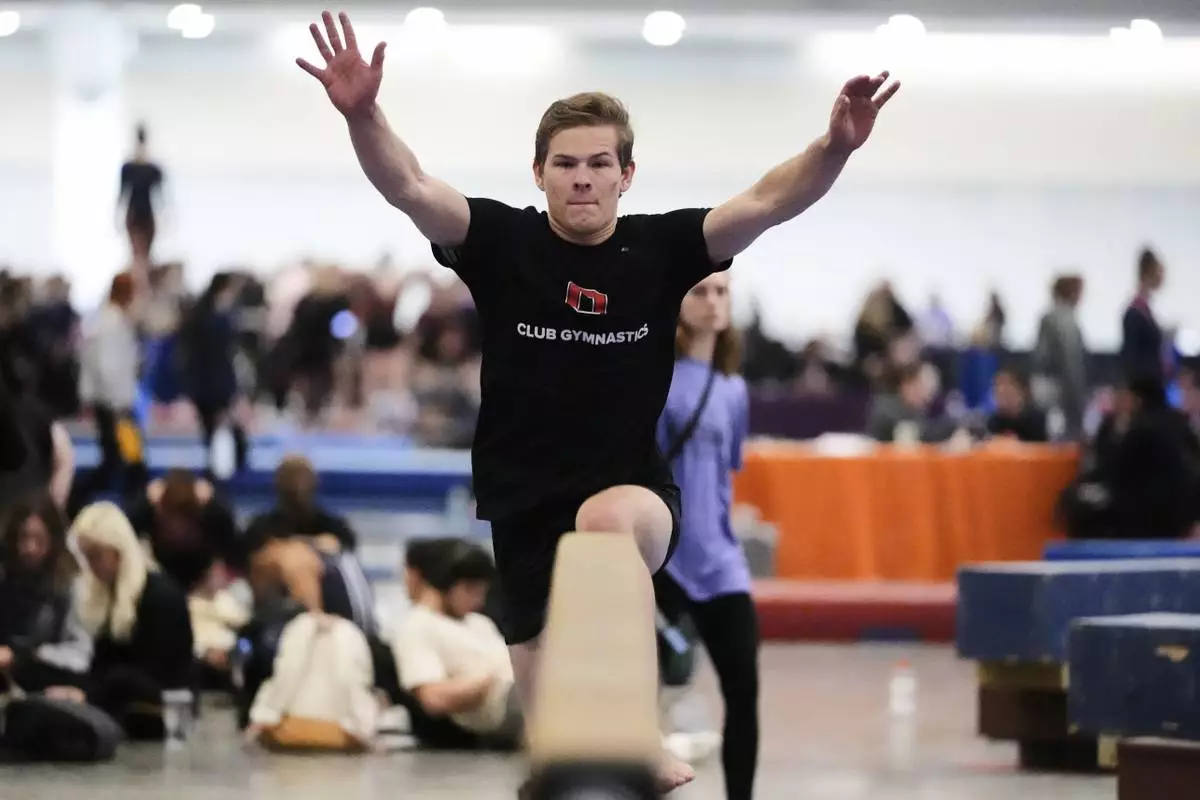
Brody Penn of Ohio State Club Gymnastics team warms up on the balance beam at the 2025 NAIGC national competition in Pittsburgh, Friday, April 4, 2025. (AP Photo/Gene J. Puskar)


